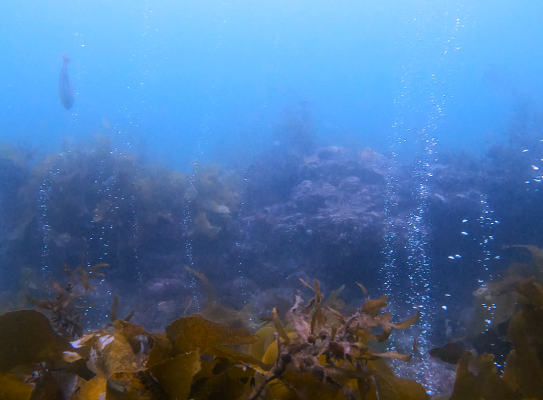Is natural hydrogen our next energy solution?

GNS Scientists are studying naturally occurring hydrogen to assess its potential to fuel transport and power industries.
Why hydrogen?
Hydrogen will play an important role in lowering emissions and energy costs, but it needs to be cost effective, accessible, and produced at scale.
GNS is working on multiple ways New Zealand can unlock locally-produced, low-cost, low-carbon hydrogen. Natural hydrogen presents a potential opportunity.
It’s still early days for natural hydrogen
Only a handful of locations across the world have documented offshore hydrogen seeps, and New Zealand is home to one of the world’s largest known natural sources.
In Poison Bay, Fiordland, underground rock processes continuously generate hydrogen gas. These seeps were last visited by GNS scientists in 1989, but the full potential of this resource is still unknown. With support from Department of Conservation, GNS researchers have managed to obtain the first modern day video footage of these offshore hydrogen seeps.
-
How is "natural hydrogen" produced?
Ultramafic, magnesium-rich rocks have long been known to produce natural hydrogen (H2) when metamorphosed underground in the presence of water, a process called serpentinisation.
Where hydrogen gas is being continually generated from serpentisation it can flow along the natural fractures to emerge at the surface as seeps.
Where is natural hydrogen?
Focused on finding low cost, low carbon domestic fuels, GNS is undertaking new research into natural hydrogen seeps.
Resources like those found in Fiordland extend under much of new Zealand including Nelson, Hamilton and Auckland. There is no development planned for Fiordland. Instead, GNS aims to take research learnings of the seeps at Poison Bay to try and find sustainable energy sources near to urban centers.
GNS has been working closely with colleagues at Canterbury University, Weora Ltd and international research partners to leverage both local and global expertise to unlock the potential of natural hydrogen in New Zealand.
